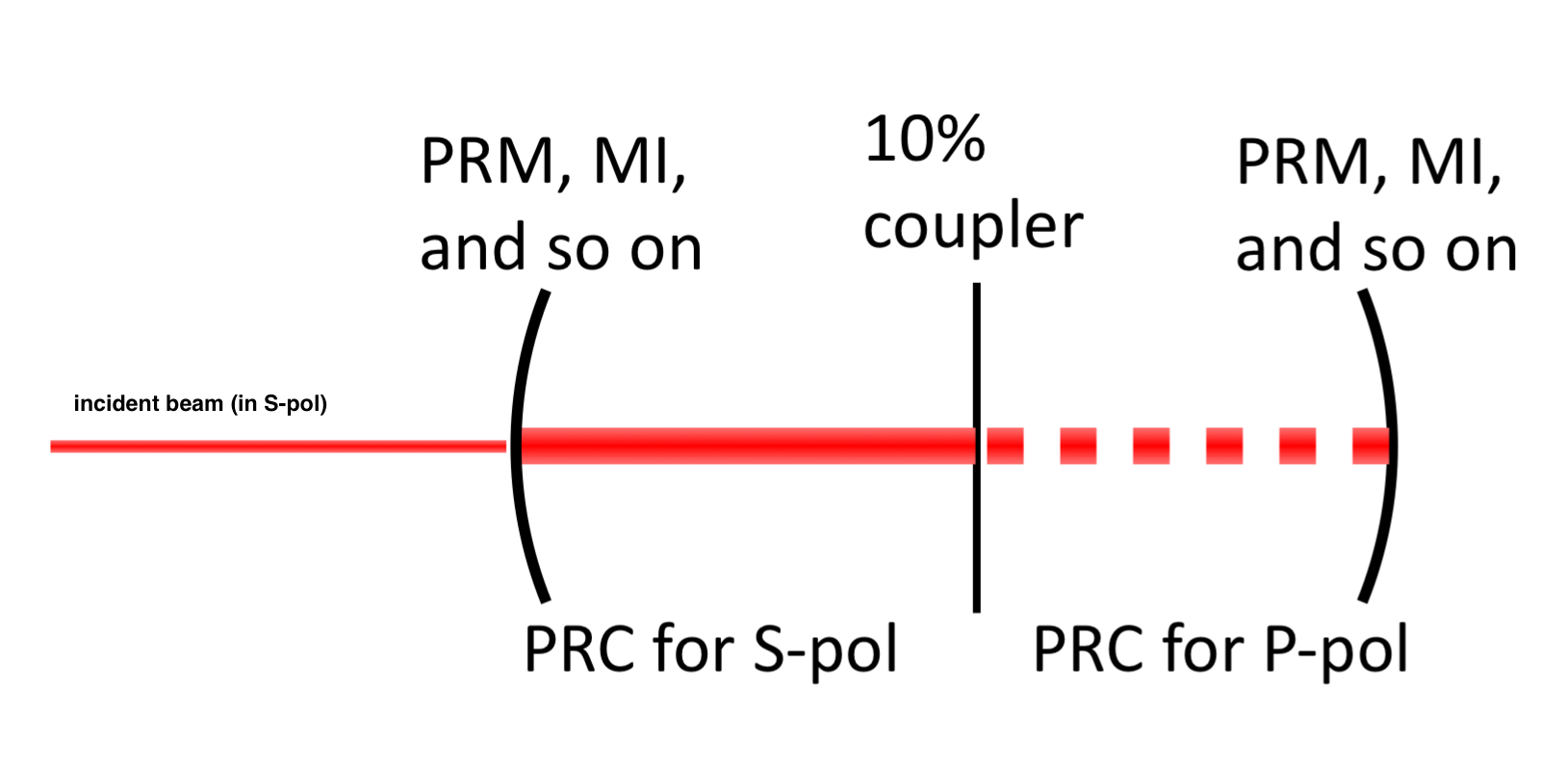[Kiwamu, Yutaro]
= Summary =
As we observed that ~10% of the reflection beam from the main interferometer is scattered into P-pol component (9314 9324), our recycling cavity can actually be a coupled cavity composed of the cavity of S-pol and one of P-pol, which are coupled by a ~10%-transmissive (imaginary) coupler. See the first figure.
In fact, we found an evidence of that, by looking at the build-up of S-pol beam and P-pol beam in the power recycling cavity

= What we did =
- lock the PRMI with the carrier on resonance.
- look at the time series of the DC laser power detected by POP_PDA1 and a temporary PD we put on the POP table (9324).
- See the following time series plot. The top trace is POP_PDA1, which detects some combination of S and P but mainly S. The bottom is the temporary PD, which detects P-pol.
This shows structure of the split peaks, which is a common feature of a coupled oscillator system. This also shows sloshing of the laser power between the world of S-pol and P-pol.

= Note =
- always PRCL on REFL, we tried both of MICH on REFL and POP, but that did not change the behavior.
- POP_PDA1 recieves the back-propagating beam while the temporary PD recieves the forward propagating one.



